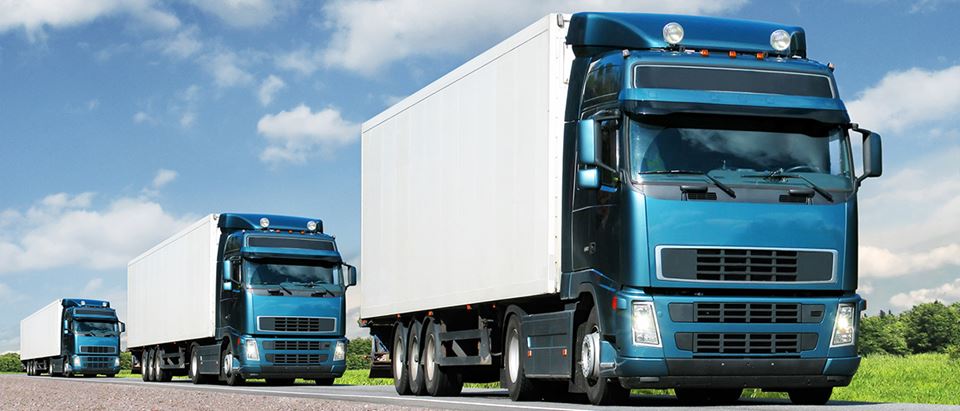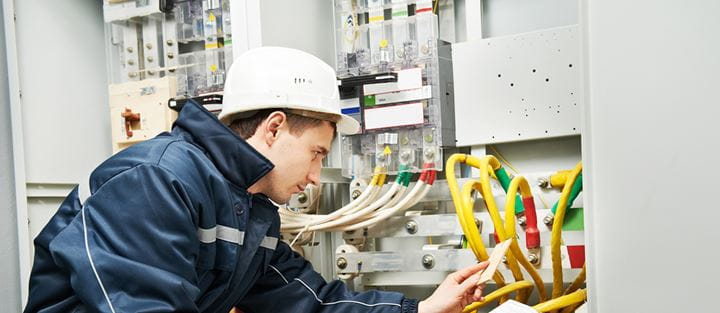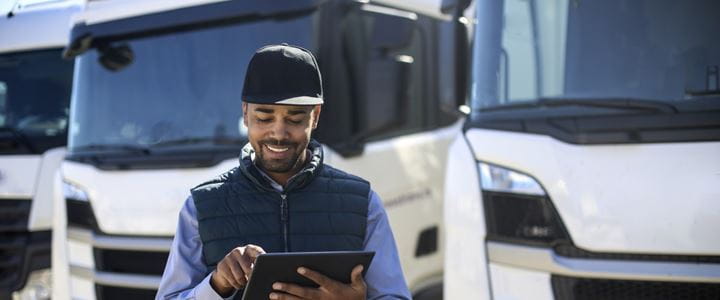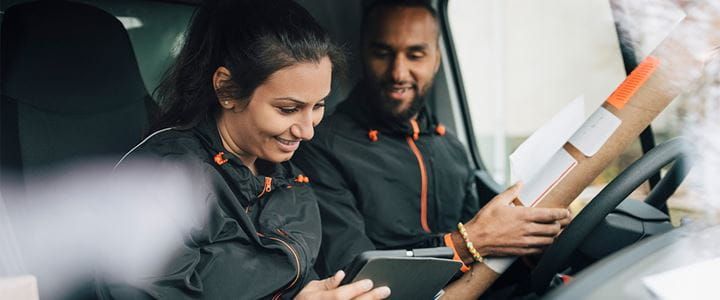The development of autonomous vehicles (AVs) is one of a number of technological advancements set to revolutionise the transportation sector. Vehicle automation technologies are rapidly developing and will be available soon. But when can you expect to see one in your mirror on a British motorway? Well, before we dive into that, here’s a bit of background around self-drive fleets.
How do self-driving trucks and lorries work?
Self-driving truck and lorry technology uses a combination of GPS, radar and video cameras. This helps achieve level 3 autonomy called ”conditional driving automation”. This is where vehicles have “environmental detection” capabilities and can make informed decisions for themselves, such as accelerating past a slow-moving vehicle.1 However, a driver still needs to be behind the wheel to interject if required.
In practice we have seen ”platoon” tests carried out in the UK. In these platoons, up to three lorries travel in formation, with acceleration and braking controlled by the lead vehicle. The lead vehicle will be controlled by a human driver and will communicate with the rest of the convoy wirelessly. The following vehicles are instructed to accelerate and brake by the lead vehicle, allowing the lorries to drive closer together than they could with human drivers.2 In the event of an emergency, the driver can take full control of their respective lorry.
The benefits of self-driving trucks
Haulage companies across the world are exploring the idea of implementing autonomous vehicle technology. Many experts within the haulage industry are hailing self-drive fleets as the future of the industry seeing many positives for both haulage companies and the end consumer including:
- Improved vehicle safety by eliminating human errors.
- Enhanced driving conditions by taking some of the payload off the heavy burdens involved with long-distance trucking.3
- Faster deliveries and increased efficiencies as they are designed to work all day and all night.4
- Better fuel efficiency by using platooning techniques for long haul routes. Savings which could be passed to the consumer.2
- Improved maintenance by reporting abnormalities in performance and catch maintenance issues early when they are cheaper and easier to fix.5
Criticisms of self-driving vehicles
The use of self-driving vehicles does have its critics however. Some of the biggest challenges with the use of self-driving truck and lorry technology and subsequent platooning techniques in UK involve:
- The amount of entries and exits on UK motorways impacting other road users’ safety.
- Cybersecurity concerns - as vehicles get smarter and more connected, there are more ways to get into them and disrupt what they're doing.6
- The congestion of UK motorways preventing the full fuel efficiency benefits.
- Changing regulatory framework - what reforms might be needed for vehicle safety approvals, for example insurance?7
- Job surpluses as the requirements for self-drive fleets change employers’ staffing needs.
Self-driving truck and lorry trials UK
Since 2014 projects have been promised to trial this technology in the UK. As mentioned earlier, we have seen ”platoon” tests carried out in the UK to trial self-driving lorries back in 2018. More recently, a consortium which includes autonomous tech firm StreetDrone has won £2.4m of funding to develop self-driving 40-tonne trucks capable of moving parts and assemblies between Nissan’s Sunderland car manufacturing plant and local businesses.8 And car manufacturing giant Volkswagen recently securing a deal with self-driving truck start-up TuSimple to start developing “Level 4” autonomous trucks.5 The advancement of self-driving technology is slowly starting to take shape in the UK haulage industry.
Insurance for self-driving vehicles
As the road to autonomous vehicles progresses, policy makers will have to pay close attention and introduce legislation to protect the public across the wide-ranging effects of autonomous vehicles. From infrastructure strategy, the licensing of vehicles, cyber-security, safety stands, and of course haulage and logistics insurance. As laws change, insurance coverages will adapt to meet the needs of customers, which may result in a fundamental shift in the way risks are measured.
Sources:
[1] synopsys.com/automotive/autonomous-driving-levels.html
[2] bbc.co.uk/news/technology-41038220
[3] dfds.com/en/about/insights/newsletters/self-driving-trucks
[4] startus-insights.com/innovators-guide/logistics-industry-trends-10-innovations-that-will-impact-logistics-companies-in-2020-beyond/
[5] highways.today/2020/10/14/autonomous-trucks/
[6] vox.com/2016/4/21/11447838/self-driving-cars-challenges-obstacles
[7] quarterly.blog.gov.uk/2018/10/16/the-future-of-transport-putting-the-uk-in-the-driving-seat/
[8] motortransport.co.uk/blog/2020/08/19/plan-to-develop-40-tonne-autonomous-trucks-gets-government-funding/











